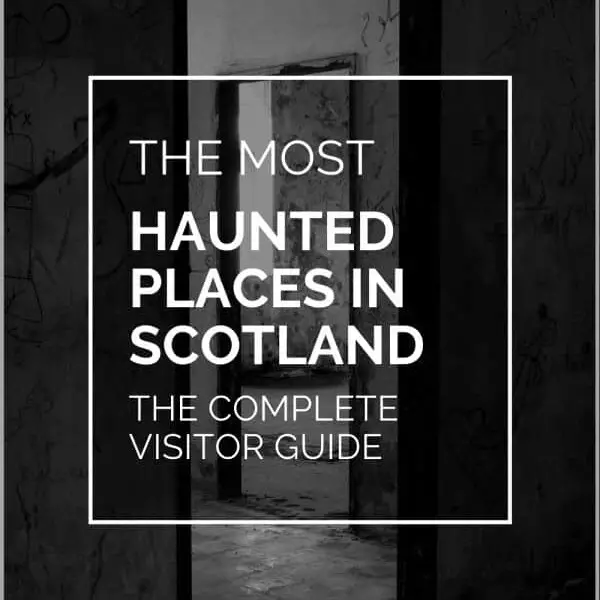In this article, we’ll dare to explore the top haunted locations that Scotland has to offer – places where history lingers and the veil between this world and the next seems perilously thin. Prepare to journey through mist-shrouded graveyards, abandoned vaults, and ancient castles, where the echoes of the past are guaranteed to send shivers down your spine.
The Edinburgh Vaults
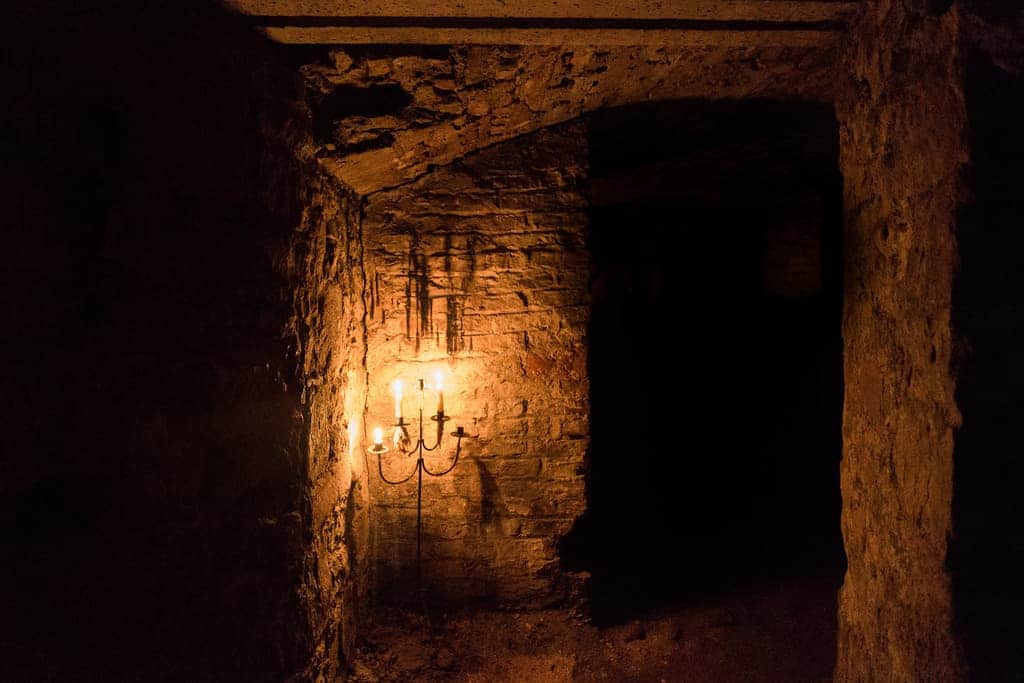
We begin with a site that has the most horrific story of any haunted place in Scotland – the vaults in Edinburgh. If you’ve not heard of the vaults before, they’re a series of underground chambers beneath the modern-day city streets that once housed entire families of Edinburgh’s poorest residents in unimaginably bad conditions.
The story of the vaults begins with the building of the South Bridge in 1785, which was built to link the High Street of the Old Town with the university buildings on the south side of the city by spanning a 1,000-foot chasm that separated them.
If you’ve ever been to Edinburgh, you’ve probably seen South Bridge, a road that runs on the southern side of Waverley train station. Shortly after it was built, businesses opened trading booths along the road to make the most of passing trade, and the lower supporting arches were converted into a series of workshops and storage rooms for the shops above.
As time passed, these underground chambers became part-flooded and fell into disrepair, so the shopkeepers moved out and Edinburgh’s poorest began to move in. Beggars, thieves, and body-snatchers all moved into these subterranean vaults and lived in conditions that must have been near-unbearable.
There would have been hardly any light, no heat, very little fresh air, and absolutely no sanitation, and yet entire families lived their lives in the slowly flooding rooms under South Bridge. As conditions inside the vaults worsened, the behaviour of the criminal elements got worse as well, and it didn’t take long for rape, murder, and muggings to become part of the fabric of the day-to-day lives of the unfortunate souls living within the vaults.
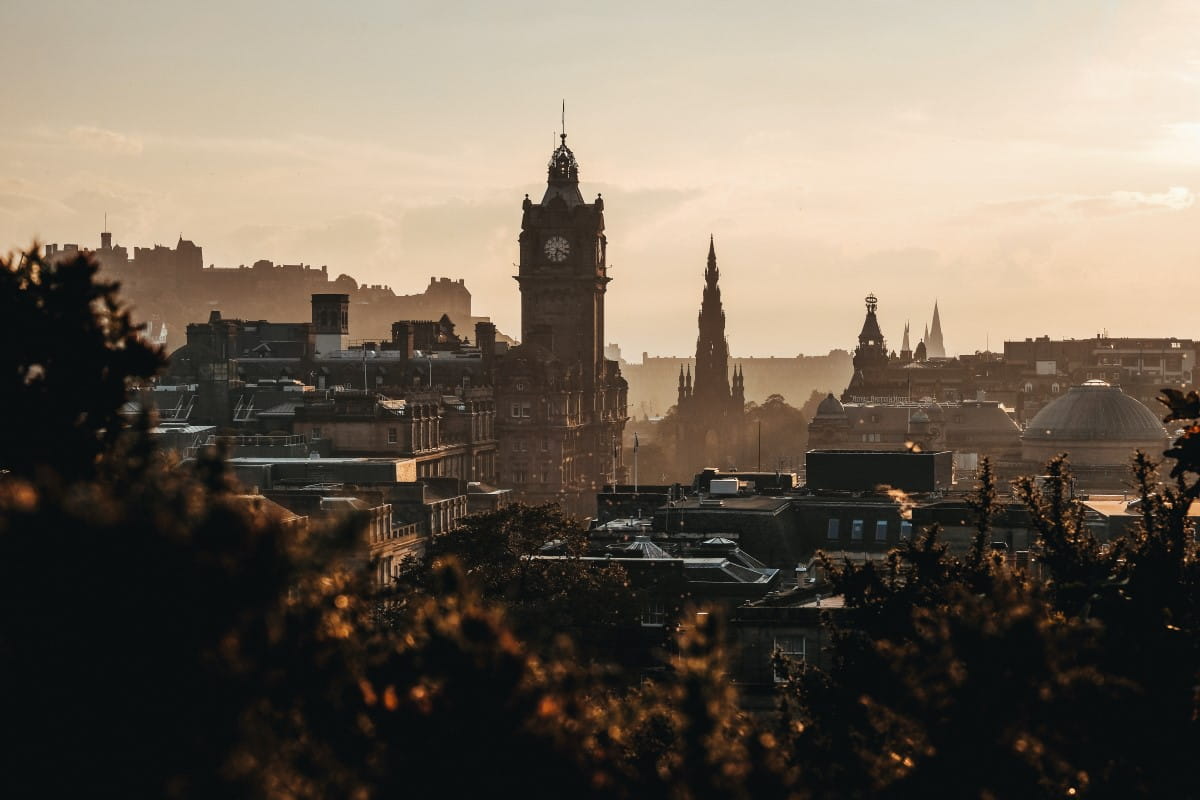
Eventually, after three decades of squalor and crime, Edinburgh’s city council decided the vaults were a blight on the city and had them sealed up with little warning for the occupants living inside them. The vaults were subsequently used as the foundations for new buildings and were entirely forgotten about until a chance excavation unearthed them in the 1980s.
What was found inside was a labyrinth of rooms where everyday objects including ceramic jars, pots, plates, and even children’s toys were strewn about just as they’d been hurriedly abandoned two hundred years earlier. In the intervening years, the vaults were opened to the public as a tourist attraction, but it wasn’t long before some of the visitors reported experiencing ghostly encounters.
Even today, people hear disembodied voices calling out to them, while others say they’ve seen full-body apparitions walking through walls. Others claim that a man in heavy boots is stalking them and throwing rocks at them, and there are a few reports from visitors who claim that a young boy grabbed their hands as they were exploring the abandoned wine cellar.
There is even a chamber that a supposed satanic cult used, and a local legend says that a woman was brutally sacrificed in the centre of the chamber after cultists had spent days torturing her. Gruesome stuff, indeed.
If you want to get down there and explore the vaults for yourself, I thoroughly recommend booking the Edinburgh underground vaults tour from Get Your Guide. The ghost tour is genuinely creepy, although I recommend going after night falls to really get into the paranormal atmosphere – just make sure you have someone’s hand to hold while you’re down there in case a ghostly child tries to grab it first.
Rosslyn Chapel
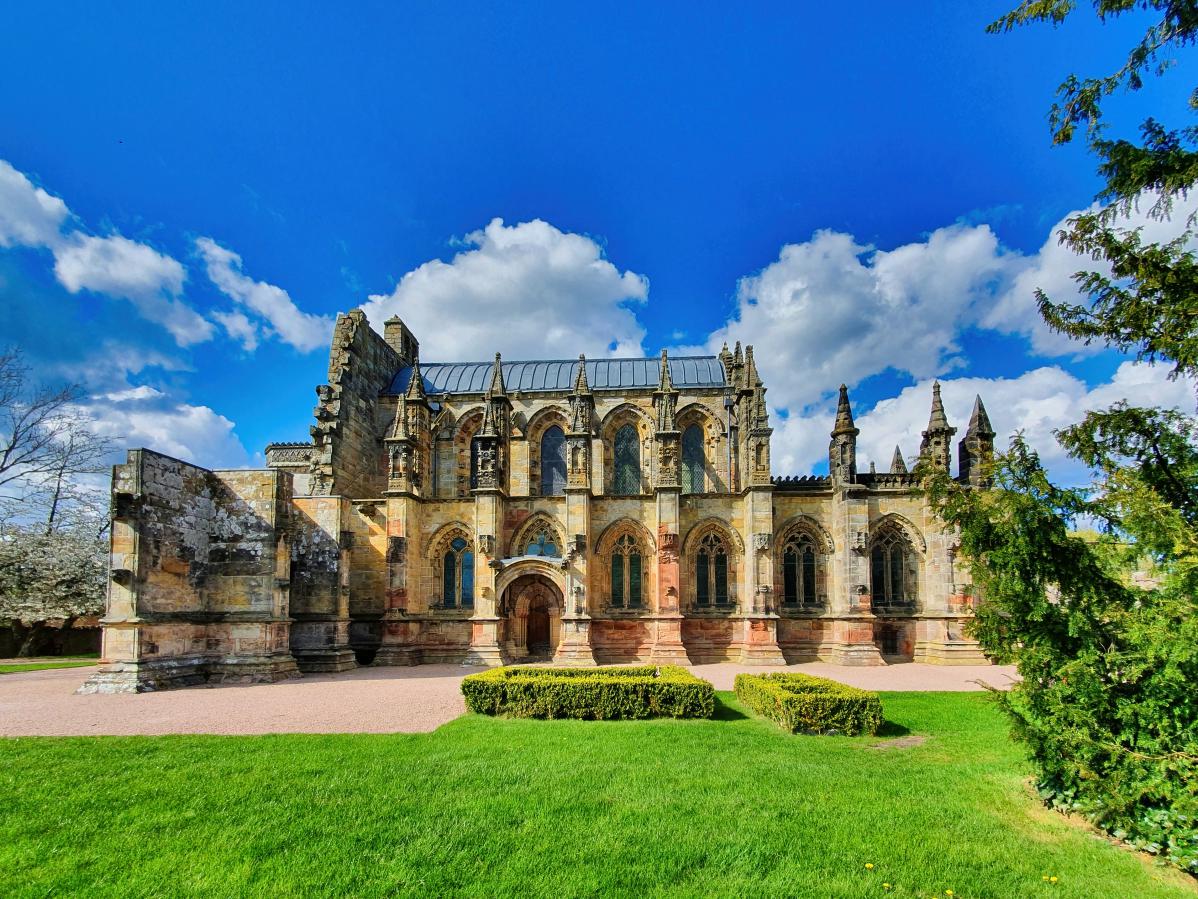
If you ever find the time to venture past the boundary of Edinburgh, I recommend taking a journey to the nearby Rosslyn Chapel. This stunning chapel has origins that date back to 1446, and it’s famous for the ornate stone carvings that seem to cover every square inch of its walls. The mysterious symbolism of these carvings has led to many theories as to their meaning, and interest in Rosslyn has exploded after being featured in the movie The Davinci Code.
Now I’ll admit that this is one site in Scotland that’s more beautiful than scary, but the fact that there are so many outlandish theories as to what the stone carvings represent, and the fact that no one can disprove them, makes Rosslyn Chapel one of the strangest places in Scotland, in my opinion.
For instance, take the Apprentice Pillar. This is a stone pillar that stands at the centre of the chapel and has ornate carvings that are more intricate than those in other parts of the building. The story behind the pillar goes that while the master mason was in Rome looking for inspiration for the design of the unfinished chapel, his apprentice was busy at work carving his own designs on the pillar.
You would think the master mason would have been pleased with his protegés work, but instead, when he returned from his overseas trip he became so enraged with jealousy at the quality of the apprentice’s craftsmanship that he beat his junior to a bloody pulp. The master mason was tried and hanged for his crimes but friends of the apprentice decided the punishment didn’t go far enough.
They made a carving of the face of the master mason high up on the chapel walls, pointing directly at the Apprentice Pillar, so he would be forced to look at it, even after his death.

Another interesting carving in Rosslyn Chapel is the depiction of corn stalks around one of the windows. Nothing is interesting about stalks of corn, you might think, except that corn was an unknown crop in Scotland at the time the chapel was built, and in fact, it wasn’t known to Europeans at all until Christopher Columbus discovered America some 50 years after the chapel had been completed.
So who carved the stalks of this unknown crop into the stonework around the window?
And even all this is insignificant compared to the secret that’s supposedly buried deep beneath the grounds of Rosslyn Chapel. According to a legend, while they were in the Middle East during the Crusades, the Knights Templar, a sect of holy warriors established by the Catholic Church in 1119, discovered the holy grail inside Solomon’s Temple.
While no one knows exactly what the grail is, we do know that shortly after this event supposedly occurred, the Knights Templar suddenly became incredibly powerful – so powerful that the King of France outlawed them. In turn, many Templars fled to Scotland where they set up homes close to Rosslyn. From that time on, there has been a story about a secret religious relic hidden beneath the chapel, but to date, it has never been found.
A preposterous tale, except that there are numerous carvings of Templar Knights engraved on the chapel walls, along with carvings of Freemason symbology (the Freemasons and Templars reputedly had close ties). Not something you’d expect to find in a Christian building, especially one that was built at a fiercely religious time.
If you’d like to see these beautiful stone carvings yourself, you can visit Rosslyn Chapel as part of a guided tour that departs from Edinburgh city centre. The tour guide will explain the symbolism of each carving and also retell the stories surrounding this stunning building, which I can confirm is genuinely fascinating having done the tour myself.
Stirling Castle
Did you know that Stirling Castle was once the most powerful fortification in all of Scotland, even more so than Edinburgh Castle? Most people don’t, so if you’re a tourist visiting Scotland, you really should take a journey to Stirling to explore this incredible historic building as it’s also one of the most haunted places in the country.
Stirling Castle sits on top of Castle Hill, (an enormous rock outcrop that can be seen for miles around) and over the years it has served both as a military stronghold and a royal palace. Robert the Bruce liberated the castle from the English in 1299, and Mary Queen of Scots was crowned there in 1542, so it has lots of historic stories waiting to be discovered. One sorry tale concerns Queen Mary and one of her servant girls.
After nearly two decades in France, the Queen of Scots returned to Scotland in 1562 and settled in Stirling Castle, where she had a number of servants at her service. One of these was known to be a Highland girl who supposedly had the power to see the future.
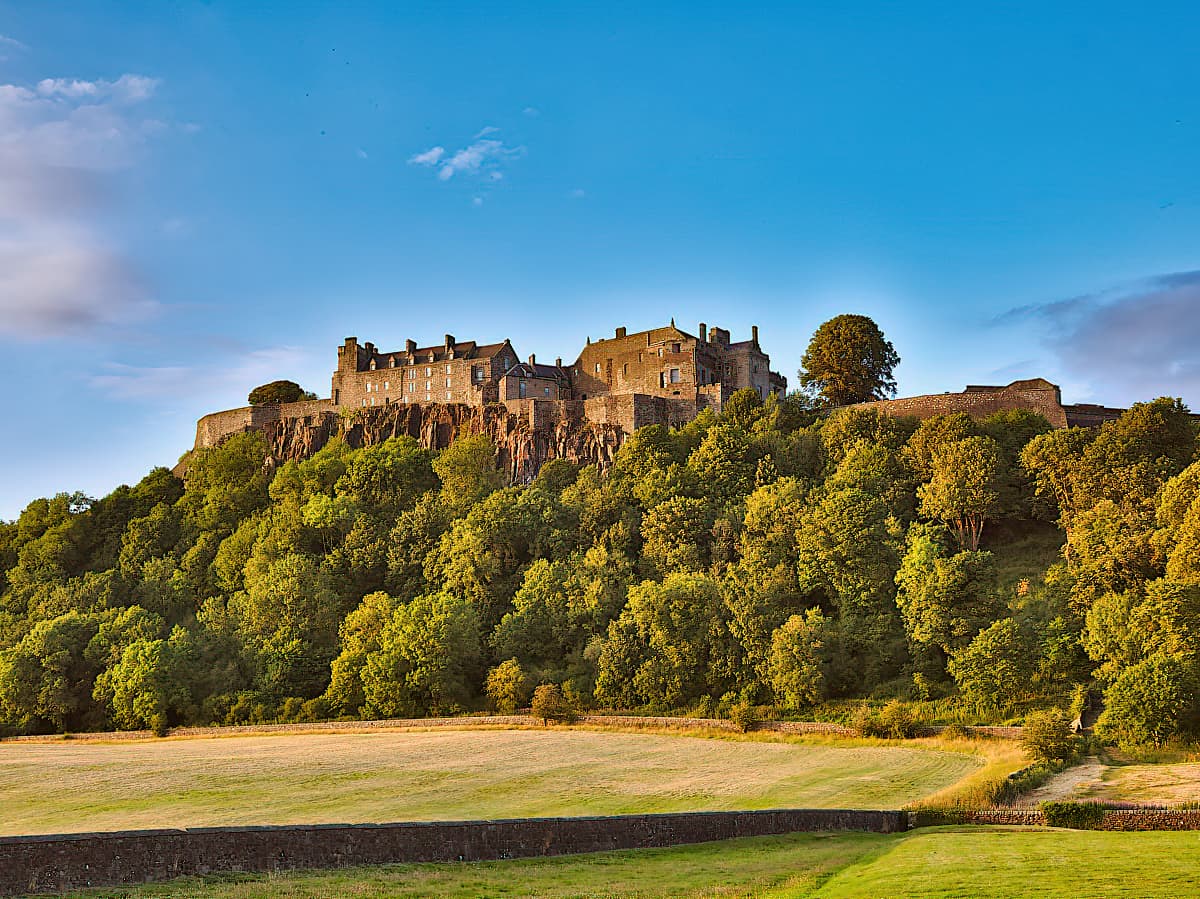
The girl told Mary that she had a premonition that if the Queen was to spend a single night in the castle she would die, so after begging Mary to let her keep watch she fell asleep in the corner of Mary’s bedroom.
A few hours later, the girl woke to find the bed chamber engulfed in flames, most likely brought on by the candles she had lit. As the fire burned through the girl’s emerald-coloured dress, she managed to pick up the unconscious queen and carry her to safety, but not before suffering terrible burns in the process.
While it’s a recorded fact that Mary recovered with barely an injury, the poor servant girl was so badly burned that she died shortly after in agony, and ever since that fateful day, there have been reports of a ghostly female figure dressed in green roaming through the castle’s corridors whose appearance foretells a tragedy involving death.
A second, rather happier ghost has also been reported at Stirling Castle. While exploring the attraction, several tourists have reported seeing a man dressed in full Highland dress walking around in the shadows. As he’s so elaborately dressed, most visitors think he’s a tour guide, but when they wander over to talk to him, he turns away and disappears.
It’s not known who the ghost is or why he stalks the castle, but it’s believed he is associated with the Argyll and Sutherland Highland regiment which began using Stirling Castle as a barracks in the early 1800s. To really make the most of a visit to Stirling Castle, you might like to join a guided tour. There are several to choose from, but the tour below includes a visit to Loch Lomond and the surrounding area.
Skaill House
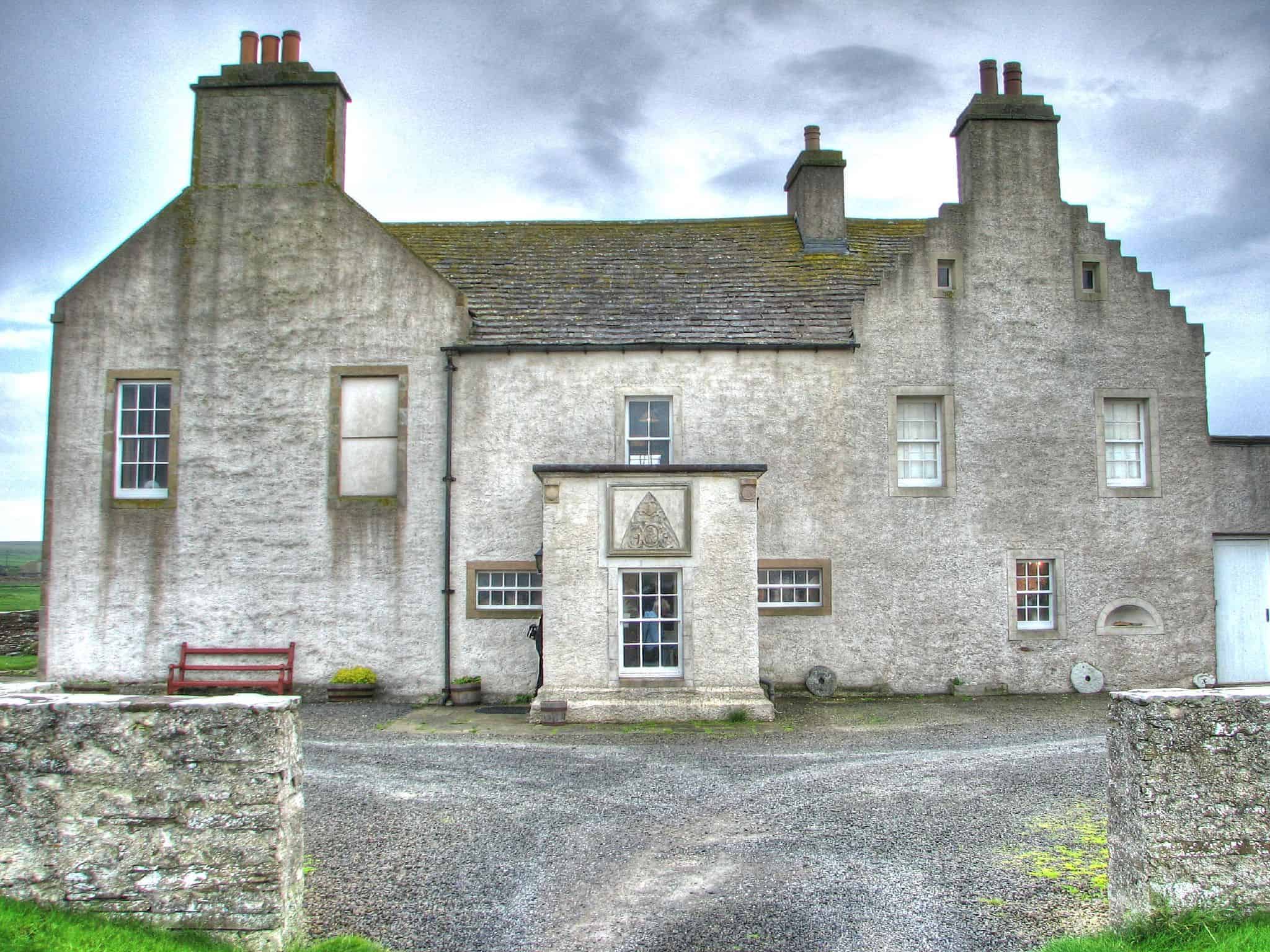
Skaill House is a historic building that I bet most tourists have never heard of. That being said, if you have any interest in the paranormal, then Skaill House is probably somewhere near the top of your list of spooky Scottish ‘must-visit’ destinations.
This Orkney manor house was built in 1620 not far from the stone-age village of Skara Brae, and it’s had more reports of weird events than most other buildings in Scotland. Originally built as the home of Bishop George Graham, it has been extensively altered over the years and has served as the family home to several Orkney Lairds, although today it’s open for public viewing as a tourist attraction.
While some people hide skeletons in their closets, this building prefers to hide them under its floorboards, and I’m talking actual skeletons here, not the metaphoric kind. During the preparation of Skaill House for its first public viewing, fifteen skeletons were discovered near the south wing and under the gravel of the east porch, and all were later proven to be of Norse origin.
It’s a fact that there are a lot of Viking influences in Orkney, and even the word Skaill is an old Norse word for ‘great hall’, so could deceased Viking warriors be to blame for the strange events that have been reported since the skeletons were disturbed?
Doors have been seen to open and close by themselves at all times of the day. Weird smells are often reported (I suspect the visitor’s dogs are to blame for that one…), and ‘members of staff’ have been spoken to by tourists, even though no staff were working at the time.
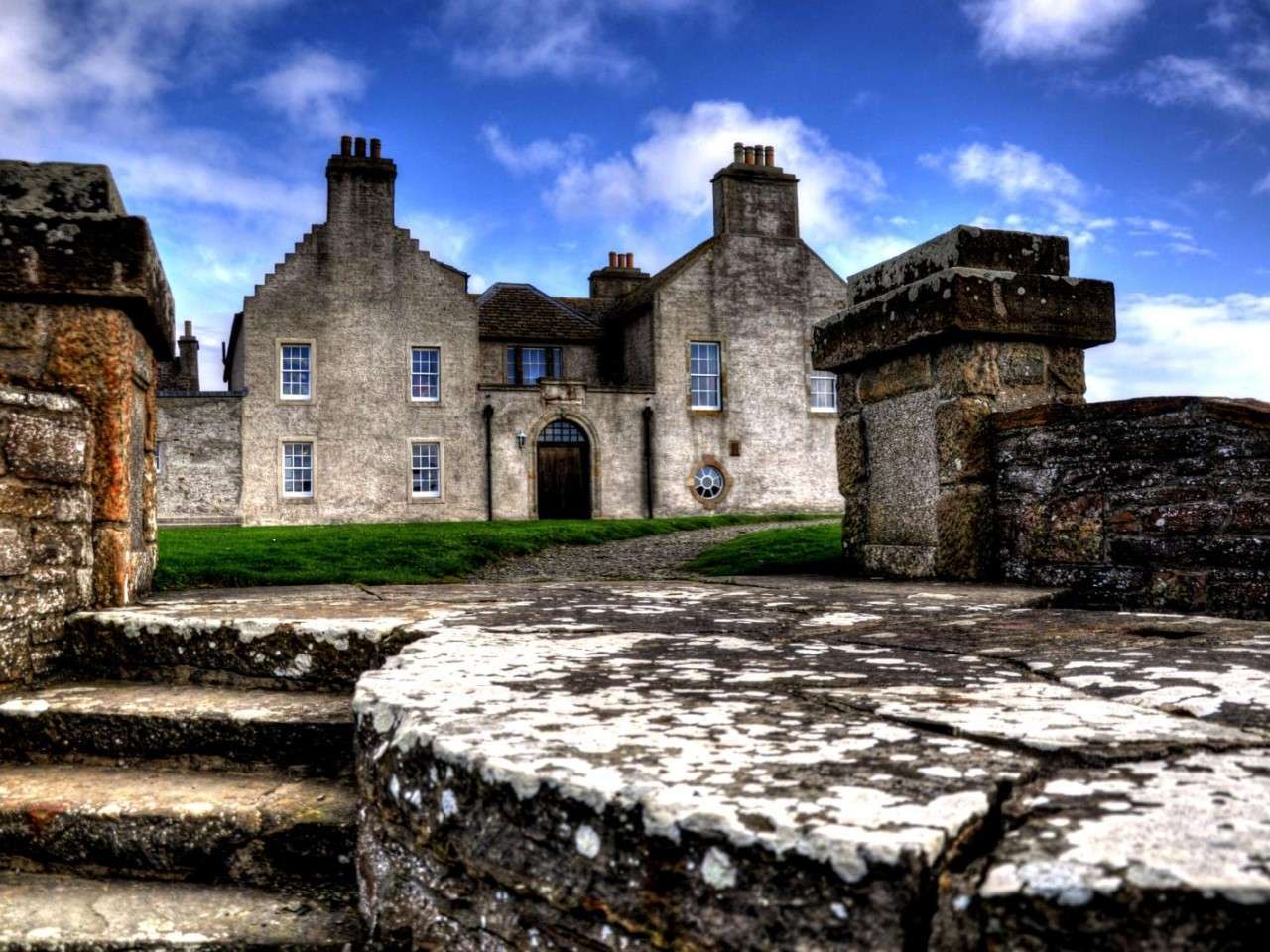
There have been reports by staff of sightings of a tall man with dark hair in the shop who disappears when they go to investigate, and even the current Laird has heard loud footsteps in the corridor when it was empty. Even weirder, overnight guests have reported feeling the weight of a person sitting down on the edge of their bed, only to feel the weight shift when they go to turn on the bedside light.
And there’s also the story of Ubby, a man who built a tiny island in the nearby loch by repeatedly rowing to the middle and dropping stones. He must have done this hundreds of times because his little island eventually became so big that he used it as a refuge.
Ubby obviously loved this wee mound of stones in the middle of Skaill Loch because, in his later years, when he knew his end was near, he chose to die on it. Since then, his restless spirit is believed to remain close to the island, unable to tear itself away from the beloved pile of rocks.
Dogs, especially, seem to sense his spirit, and there has been more than one visitor who has complained that their dogs get restless and upset when they’re near Skail Loch, and some get so upset that they shake uncontrollably when they’re near it.
Dunrobin Castle
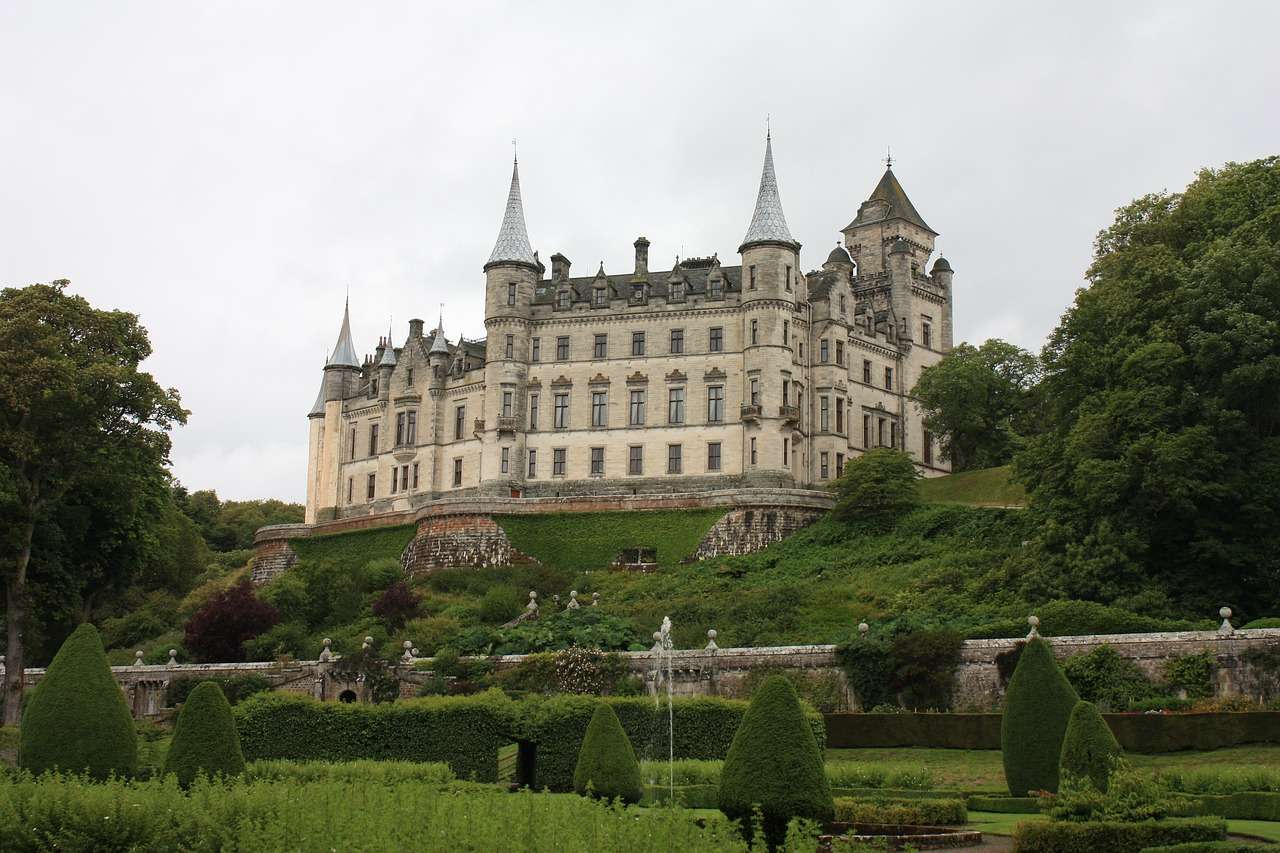
Dunrobin Castle can be found in the village of Golspie in Sutherland, usually surrounded by busloads of tour coaches as it’s famous for being one of the prettiest castles in Scotland. But it’s also one of the most haunted.
Built in the style of a French château, the castle dates back to 1275, but the majority of the building is much newer, with the impressive Scottish baronial frontage added in the mid-19th century. Remarkably, this fortified house has been home to the same family (the Earls and Dukes of Sutherland) for over 800 years.
Dunrobin Castle wasn’t always as glamorous-looking as it is now, though. In fact, when it was originally built, it was more of a fortified square keep with walls six feet thick, perched on top of a clifftop lookout position. Although this isn’t exactly a creepy building, it has a maze of rooms that are easy to get lost in, and the fact that it’s so old means that it supposedly has its own resident ghost.
In the 17th century, the Earl of Sutherland was at the height of his power and influence, and among his children was a beautiful young girl called Margaret. It was believed that Margaret had fallen deeply in love with one of her stablehands, Jamie Gunn, in an illicit affair that would have been devastating to the Sutherland family if it ever became public knowledge.
Unfortunately for the young couple, one of the house staff reported them, and the enraged Earl threw his daughter into the castle attic, where he intended to keep her until he had found her a more suitable partner. Margaret, however, was having none of it, and with the help of her maid, she fashioned a makeshift rope out of bedclothes and snuck out the window, hoping to meet her lover at the bottom, where they could escape together on one of her father’s horses.
Unfortunately, just as Margaret was climbing down the rope, her father found her, and the story goes that he either cut the rope out of fury or she let go in fear. In a cruel twist of fate, instead of escaping to freedom, the poor girl fell from the upper level of the castle to her death on the rocks below.
Ever since that fateful day, Margaret has been frequently heard by staff and visitors on the upper floors of Dunrobin Castle, wailing uncontrollably for the life of happiness she missed out on. Psychics have also visited the castle, and they claim to feel a sense of unfathomable loss on the upper floors.
Having personally visited Dunrobin, I can’t attest to any strange sensations, but I can confirm that it’s a stunning castle that every traveller to the far northern Highlands should add to their sightseeing itinerary.
Greyfriars Cemetary
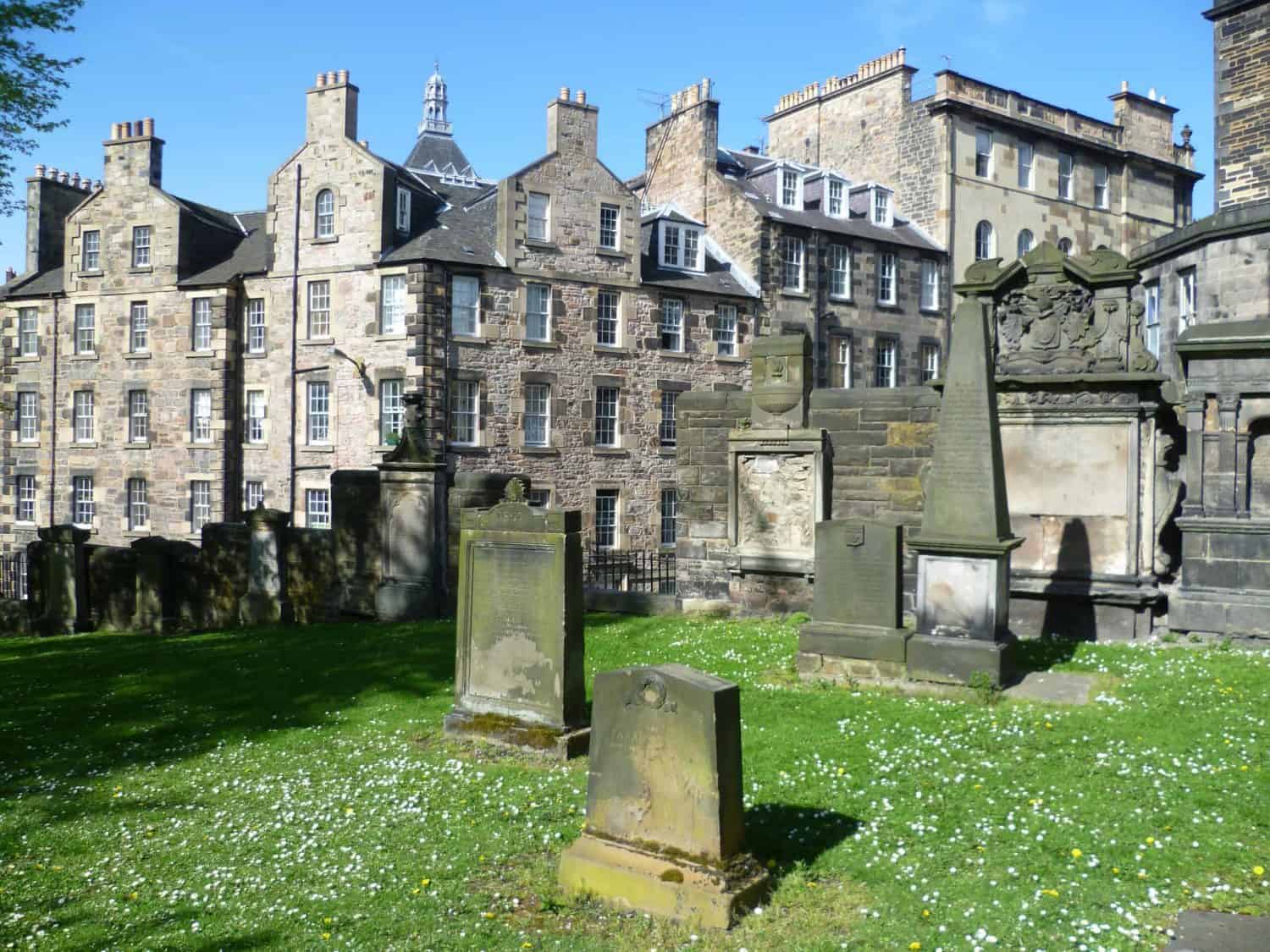
Ok, so this spooky place isn’t exactly a building, but it surrounds a building (actually one of the most famous buildings in Edinburgh), and it has a dark history full of murder, persecution and torture.
Everyone knows the story of Wee Bobby, the loyal Scots Terrier who lay by his owner’s grave for 14 years after he died (read my Greyfriars Bobby guide for more information), but perhaps not so many people know the story of the kirkyard where Bobby’s owner was laid to rest.
The site where Greyfriars Kirk is located was used as a Franciscan friary in mediaeval times, and it originally had no graveyard attached to it. However, due to the lack of burial sites in Edinburgh’s Old Town in the 16th century, the site was converted into a graveyard, as it was close to the city centre but not so close that it could cause sanitation problems.
Many notable Edinburgh residents were buried in Greyfriars throughout its history including the Lord Advocate Sir George Mackenzie, the poet Duncan Ban MacIntyre, Admiral Sir Charles Douglas and the artist Sir John Medina.
The most infamous of these is Sir George Mackenzie, who obviously loves the place so much that he’s not content to just lie in his coffin, preferring instead to terrify Edinburgh’s residents above ground.
Mackenzie was known as a ruthless persecutor of the Covenanters during his time in office (a religious movement in the 17th century), and after a failed anti-government revolution in 1679, 1,200 Covenanters were locked inside a freezing-cold mausoleum inside Greyfriars kirkyard as punishment.
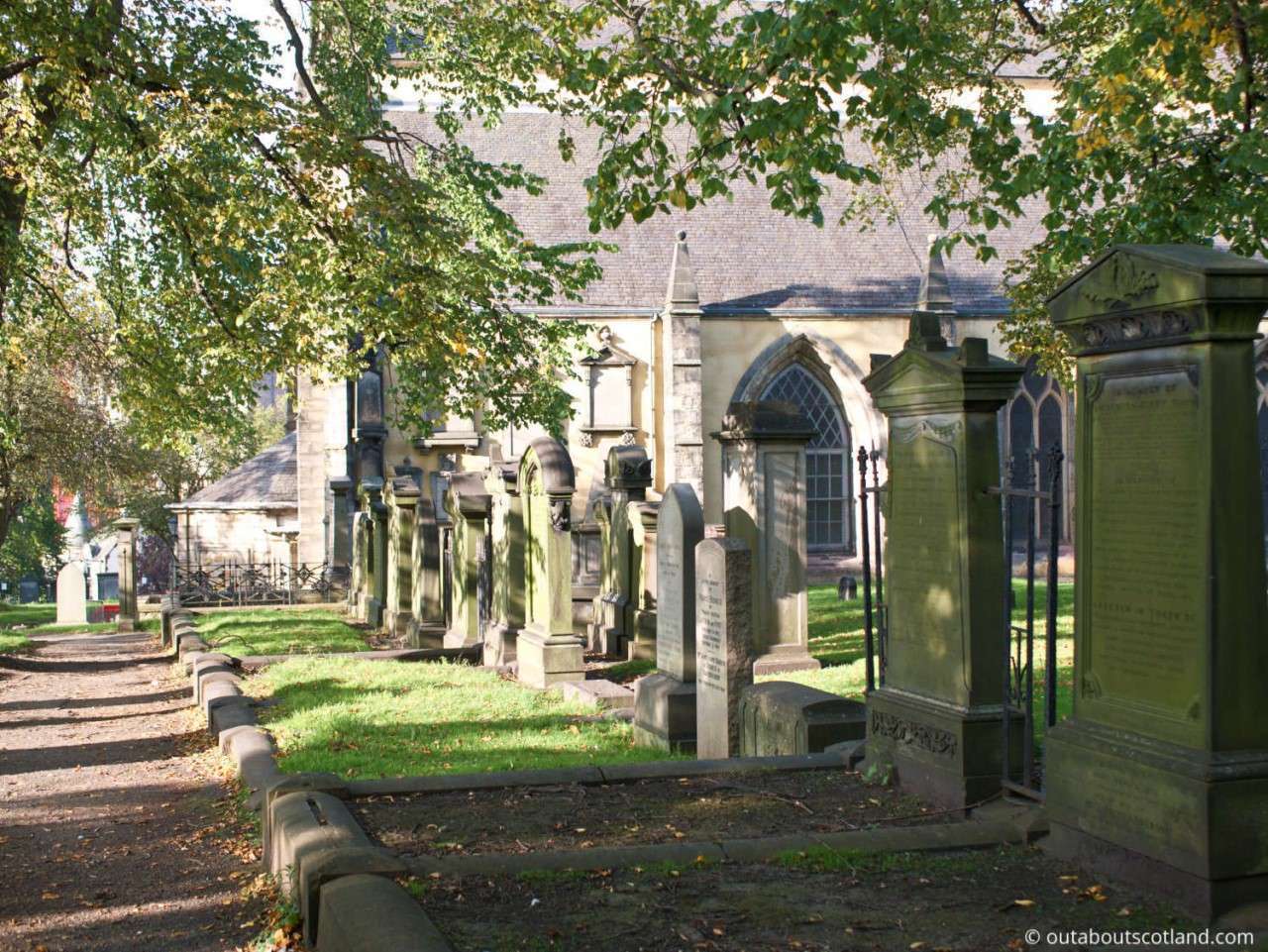
The conditions were terrible for the prisoners. Not only were they kept in a tiny, overcrowded space during the bitter cold Scottish winter, but they had hardly any food or water, and of the 1,200 people who went into the makeshift prison, only 275 came back out alive.
We’ll never know if Mackenzie suffered from guilt over how he treated the Covenanter prisoners, but since then, strange things have been happening around the kirkyard. Over the years, more than 450 tourists have reported walking out of the site with bruises, burns, and scratches mysteriously appearing all over their bodies, while another 140 have suddenly collapsed while visiting the tomb of Mackenzie.
Even worse, his ghost has been seen walking amongst the gravestones late at night, attacking anyone unfortunate enough to cross his path, and he has been so vicious that he has even broken people’s bones. Worse still, there has been a death attributed to the ghost of Mackenzie, when a local psychic attempting to make contact with him had a sudden heart attack.
If you’d like to visit Greyfriars Kirk yourself, there’s no better way to do it than on a guided tour. This tour takes visitors around Edinburgh’s haunted graveyards as well as the spooky underground vaults mentioned at the start of this article.
Spooky Events in Scotland
We love celebrating Halloween and all things ghostly here in Scotland and you’ll find several events held in most towns and cities throughout the year. From ghost-themed comedy events to scary film festivals, you’re bound to find something to entertain you.
Paisley Halloween Festival
The Event Scotland-managed Year of Young People Fund is supporting this event. The town of Paisley, near Glasgow, is hauntingly transformed as more than 500 costumed young people and outdoor performers parade through the streets along with a series of spooktacular floats. The Paisley Halloween Festival is staged in late October annually.
Samhuinn Fire Festival
In one of the most colourful events on Edinburgh’s calendar, fire worshippers wearing colourful costumes depict characters from ancient folklore with displays featuring fire, music, and street theatre performances. The Samhuinn Fire Festival on top of Calton Hill really is a feast for the senses. The Celtic festival (which is organised by the Beltane Fire Society) takes you back to the traditions of Samhuinn, the pagan celebration of the end of the harvest season and the arrival of winter, which is usually held in April.
Mercat Tours Ghost Tour
Edinburgh’s Mercat Tours certainly know how to put on an atmospheric tour, and their knowledgeable guides will take you deep into the heart of Edinburgh’s Old Town and below the city streets to recite ghostly tales from the city’s dark past.
You start out by following a cloaked guide through the creepy back streets while listening to stories of murder, torture and hangings from yesteryear, and finish with a visit to the eerie Blair Street underground vaults – widely acknowledged as one of the most haunted places in Scotland.
Frequently Asked Questions
What is the most haunted place in Scotland?
Glamis Castle near Forfar is widely recognised as the most haunted place in Scotland. The 15th-century castle has frequent sightings of several ghosts including the grey lady, the white lady, Jack the runner and Earl Beardie.
Where are the best places to go ghost hunting in Edinburgh?
Mary King’s Close, Greyfriars Kirk, Edinburgh Castle and The Vaults.
Where are the best places to go ghost hunting in the Highlands?
What is the most famous ghost in Scotland?
Arguably the most famous ghost in Scotland is one that haunts the country’s most-visited tourist attraction – the 900-year-old Edinburgh Castle.
There have been many sightings of a headless drummer in the castle since the days of Oliver Cromwell and legend says that his appearance foretells danger.

